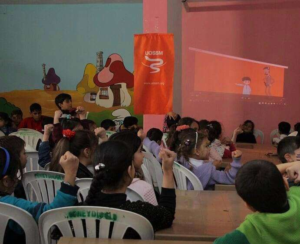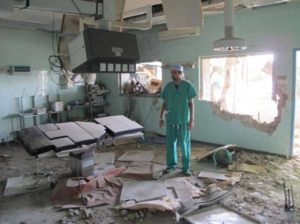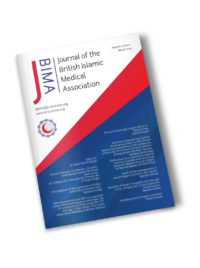
Medical relief during the time of war and disaster is considered amongst the most difficult and complex tasks, and it’s fundamentally intertwined with so many factors, including the lack of security and safety, the displacement of the population, and the lack of public health and food security.
The humanitarian crisis started in Syria in 2011, and the United Nations considers it to be amongst the worst crises of this kind since the Second World War (United Nations report 9 June 2020) and the Syrian people are still suffering from the interruptions of their education, health, and food security.
The aim of this article is not to analyse the reasons for this crisis (catastrophe) and to delve into the geo-political intricacies of it. It is instead to shed light on the humanitarian situation generally, and on the suffering of children in particular.
1.The Syrian catastrophe in numbers
- The Syrian Network for Human Rights has stated that from March 2011 to June 2021, 227,781 civilians amongst them 29,250 children and 28,526 women have been killed in Syria.
- The number of disappeared is 101,678 and a further 14,537 were casualties in Syria’s prison system.
- 13 million Syrians have been displaced, 6.6 million externally (2) and 6.4 million internally, essentially
half of Syria’s pre-crisis population. - 2.5 million children have had their education interrupted.
2. Consequences of the Syrian crisis
The Syrian crisis is unique in that: is unique in that:
- The repeated and long-term term shelling of hospitals.
- The continuous upheaval and expulsion of inhabitants from the areas they live in, and the spread
of psychological diseases and the interruption of learning amongst children as a consequence. This has been confirmed by the Secretary General of the UN (3).
2.1 On children
Children have been subjected to the worst consequences of the crisis, and the indiscriminate nature of shelling has been devastating. Children have been affected by the torture within prisons too, and schools and play facilities have been hit by shelling as well due to the haphazard airstrikes of the Syrian government (it is proven that more than 3,800 schools have been destroyed) (5).
The size of the problem for children has increased greatly over the last decade; a generation has been born that suffers from a lack of education, be it traditionally within schools, or health education and no real focus on child wellbeing. The danger of illiteracy is worrying and is unprecedented in scale in the history of modern Syria.
Approximately 1.25 million children live in refugee camps within Syria; they suffer from the worst circumstances with a lack of cleanliness, proper place to live, medical care, and even Islamic education as refugees have been forcibly displaced. So many children are now the breadwinners for their families and are now working instead of continuing with their education. The Information Management Unit (IMU) within the Union of Medical Care and Relief Organisations (UOSSM), produced a report (6) on the situation of schools within the camps in Northern Syria. And to carry out this study, researchers visited 1,302 and camps within the Idlib and Aleppo governorates.
It transpired that only 175 camps had schools, and the number of schools was 189, most of which lacked teachers and essential educational resources. And with regards to children who have special educational needs, their situation is even more difficult with little care being shown toward these children with their families. UOSSM is one of the few organisations that work with them and ensure their needs are met.
2.2 Mental Health
The number of children in North Western Syria who have attempted suicide, and have successfully gone ahead with it has increased sharply over the last year, as the organisation Save The Children states. The report stated that 1 in 5 suicide attempts were made by teens. The increase in the number of suicides was sharp; it had increased by 86% compared to the first 3 months of 2020.
According to the report, no less than 42 people attempted suicide, and they were no older than 15. The report also stated that 18% of the casualties of suicide were teens and young people who were between 16 and 20 years old.
2.3 Consequences of the crisis from the medical angle
The systematic destruction of hospitals and medical facilities has been catastrophic. According to videos located in the Syrian Archive, there have been 410 separate airstrikes and 270 of these have been against medical facilities from 2011 until 2020. And the organisation has released a set of statements that indicate that 90% of airstrikes on hospitals are not just random and haphazard, but are part of a calculated strategy on behalf of the regime.
The targeting of doctors and healthcare workers (9):
The killing of 930 healthcare workers from March 2011 – March 2021.
dentist, doctor, public health student, technician, nurse, paramedic, pharmacist, veterinarian.
More than 10,000 doctors have left Syria according to official statistics provided by the Syrian Medical Union.
The medical response and future challenges
Syrian medical organisations have worked with international medical organisations from the start of the crisis, and despite the difficulties they have faced, following has been achieved:
- The creation and support of public and specialist The creation and support of public and specialist
hospitals. - The creation of new health centres.
- Psychological support.
- Recruiting and training healthcare staff despite the Recruiting and training healthcare staff despite the difficulties they are facing.
- Physiotherapy.
- The protection of medical staff.
The following are amongst the challenges that medical staff face:
- Geopolitical complications and their effect on humanitarian work.
- The continuing of the crisis for more than 10 years.
- The Covid-19 pandemic and it’s negative effect on the healthcare situation in general.
- Lack of support and resources.
- The continuous pressure on medical organisations that are self-founded (out of necessity) and are filling gaps in the absence of formal medical organisations.
- The weakness in the number of specialist doctors.
There is no doubt that the health crisis that the Syrian people are facing is amongst the most difficult since the Second World War. All the work that medical organisations do is greatly appreciated.
The extent of the crisis has been affected the mental health of Syrians, especially women and children which will go on for more than a generation. The international community is still paralysed and can’t protect civilians and can’t provide them with the medical, psychological, and educational support they desperately need.
References
- https://sn4hr.org/arabic
- https://sn4hr.org/arabic
- https://sn4hr.org/arabic/2020/07/22/12533 3/
- https://sn4hr.org/arabic/2021/06/04/136504
- Save the children/29/04/2021
- https://www.acu-sy.org/wp sy.org/wp-content/uploads/2017/01/ACU /2017/01/ACU-IMU-Schools-in-
Camps-E4-Ar-090621.pd 090621.pd- - https://www.independent.co.uk/news/world/middleeast/suicide-syria-children children-save-the-children-b1839111.html
- https://syrianarchive.org
- https://phr.org/our-work/resources/medical work/resources/medical-personnel-are-targeted-inin-syria/?lang=ar

 Figure 1 – UOSSM centre for supporting children with UOSSM centre for supporting children with
Figure 1 – UOSSM centre for supporting children with UOSSM centre for supporting children with  Figure 2 – This photo is from a website for doctors This photo is from a website for doctors
Figure 2 – This photo is from a website for doctors This photo is from a website for doctors 